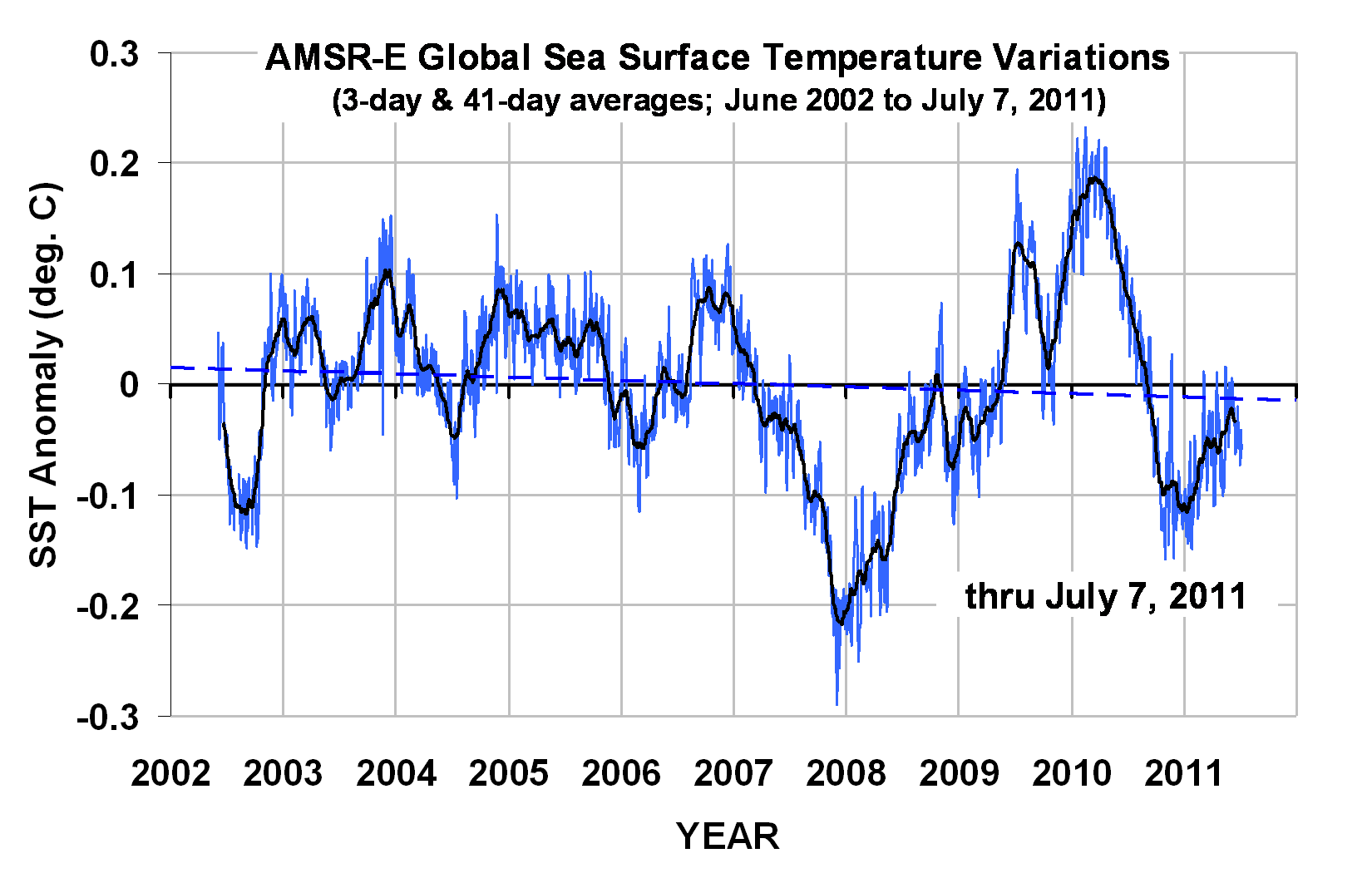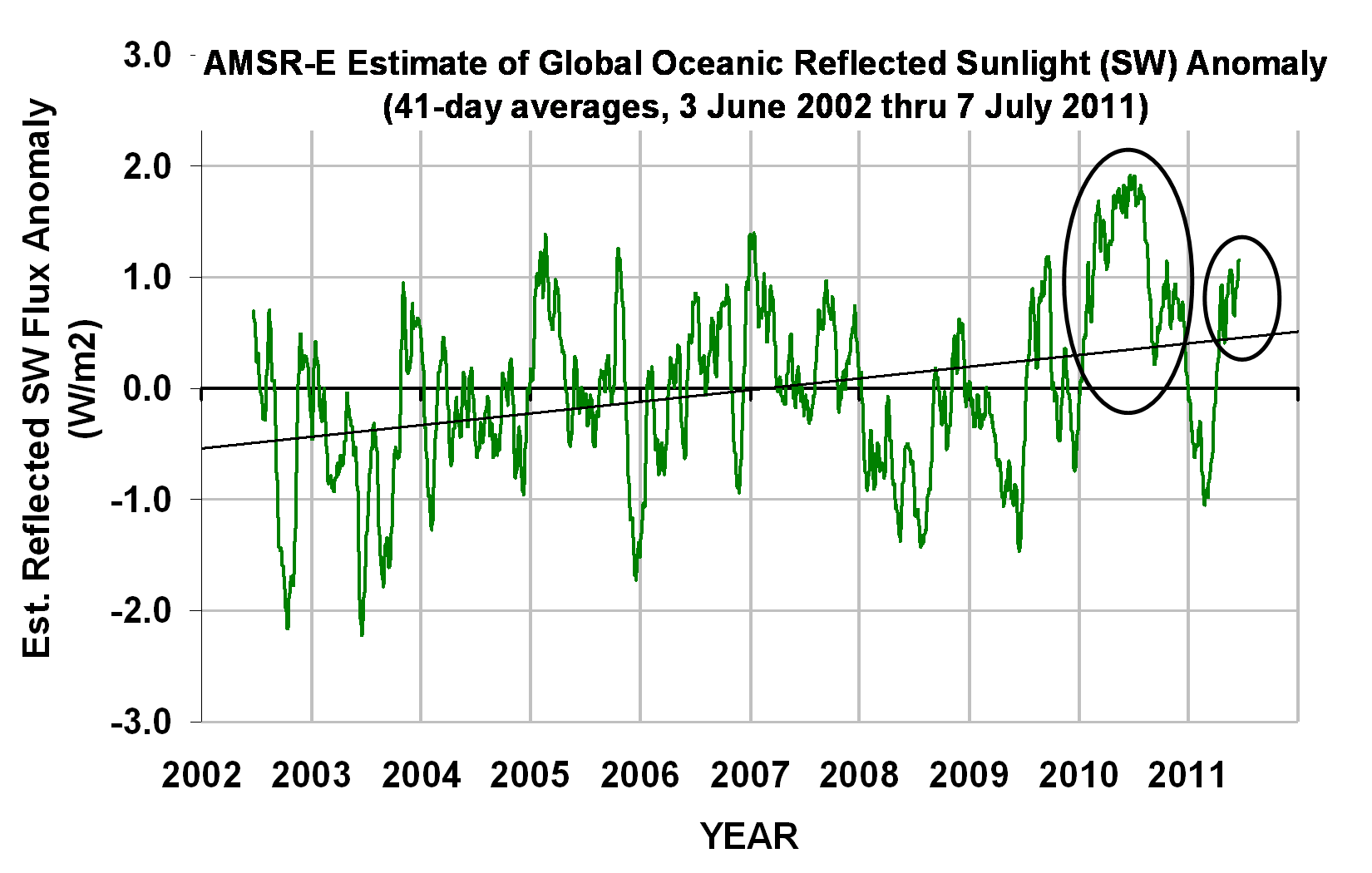Here’s the global average sea surface temperature (SST) update from AMSR-E on NASA’s Aqua satellite, updated through yesterday, July 7, 2011:

The anomalies are relative the existing period of record, which is since June 2002.
As can be seen, the SSTs have not quite recovered from the coolness of the recent La Nina.
Something else I track is the ocean cloud water anomalies, also from AMSR-E, which I have calibrated in terms of anomalies in reflected sunlight based upon Aqua CERES data:

Why I watch this is it often predicts future SST behavior. For instance, the circled portion in 2010 shows a period of enhanced reflection of sunlight (thus reduced solar input into the ocean), and this corresponded to strong cooling of SSTs during 2010 as seen in the first graph.
So, the recent new enhancement of cloudiness (smaller circle) suggests a fall of SST in the next month or so. After that, it generally takes another month or so before ocean changes are transferred to the global oceanic atmosphere through enhanced or decreased convective overturning and precipitation.

 Home/Blog
Home/Blog




How might the recovery or lack thereof in sea surface temperatures impact broader climate patterns or weather phenomena? Regards Telkom University